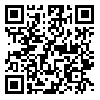1. Stojanov A, Vojinovic S, Stojanov J, Malobabic M, Stevic M, Milosevic V, et al. Quality of sleep and fatigue in patients with the relapsing–remitting multiple sclerosis during the coronavirus disease–2019 pandemic. Clin Neurol Neurosurg. 2021;205:106640. [
DOI]
2. Marques KAP, Trindade CBB, Almeida MCV, Bento-Torres NVO. Pilates for rehabilitation in patients with multiple sclerosis: a systematic review of effects on cognition, health–related physical fitness, general symptoms and quality of life. J Bodyw Mov Ther. 2020;24(2):26–36. [
DOI]
3. de Sèze J, Devy R, Planque E, Delabrousse–Mayoux JP, Vandhuick O, Kabir M, et al. Fatigue in teriflunomide–treated patients with relapsing remitting multiple sclerosis in the real–world Teri–FAST study. Mult Scler Relat Disord. 2021;47:102659. [
DOI]
4. Sosnoff JJ, Shin S, Motl RW. Multiple sclerosis and postural control: the role of spasticity. Arch Phys Med Rehabil. 2010;91(1):93–9. [
DOI]
5. Mosadegh Y, Nasiri M, Ghadimi Kalate Z, Alghosi M. Cognitive task on stance phase timing of walking in multiple sclerosis patients. Middle Eastern Journal of Disability Studies. 2019;9:83. [Persian] [
Article]
6. Lopez LP, Palmero NV, Ruano LG, San Leon Pascual C, Orile PW, Down AV, et al. The implementation of a reflex locomotion program according to Vojta produces short-term automatic postural control changes in patients with multiple sclerosis. J Bodyw Mov Ther. 2021;26:401–5. [
DOI]
7. Abou L, Wong E, Peters J, Dossou MS, Sosnoff JJ, Rice LA. Smartphone applications to assess gait and postural control in people with multiple sclerosis: a systematic review. Mult Scler Relat Disord. 2021;51:102943. [
DOI]
8. Santinelli FB, Barbieri FA, Pinheiro CF, Amado AC, Sebastião E, van Emmerik REA. Postural control complexity and fatigue in minimally affected individuals with multiple sclerosis. J Mot Behav. 2019;51(5):551–60. [
DOI]
9. Shumway–Cook A, Woollacott MH. Motor control: theory and practical applications. 1st ed. Philadelphia: Lippincott Williams & Wilkins; 1995; 89–90.
10. Taborri J, Agostini V, Artemiadis PK, Ghislieri M, Jacobs DA, Roh J, et al. Feasibility of muscle synergy outcomes in clinics, robotics, and sports: a systematic review. Appl Bionics Biomech. 2018;2018:3934698. [
DOI]
11. Van Emmerik REA, Remelius JG, Johnson MB, Chung LH, Kent–Braun JA. Postural control in women with multiple sclerosis: effects of task, vision and symptomatic fatigue. Gait Posture. 2010;32(4):608–14. [
DOI]
12. Prosperini L, Castelli L. Spotlight on postural control in patients with multiple sclerosis. Degener Neurol Neuromuscul Dis. 2018;8:25–34. [
DOI]
13. Pilutti LA, Greenlee TA, Motl RW, Nickrent MS, Petruzzello SJ. Effects of exercise training on fatigue in multiple sclerosis: a meta–analysis. Psychosom Med. 2013;75(6):575–80. [
DOI]
14. Newland P, Starkweather A, Sorenson M. Central fatigue in multiple sclerosis: a review of the literature. J Spinal Cord Med. 2016;39(4):386–99. [
DOI]
15. Liepert J, Mingers D, Heesen C, Bäumer T, Weiller C. Motor cortex excitability and fatigue in multiple sclerosis: a transcranial magnetic stimulation study. Mult Scler. 2005;11(3):316–21. [
DOI]
16. Jallouli S, Ben Dhia I, Sakka S, Mhiri C, Yahia A, Elleuch MH, et al. Combined effect of gender differences and fatiguing task on postural balance, functional mobility and fall risk in adults with multiple sclerosis: a preliminary study. Neurol Res. 2022;44(12):1074–85. [
DOI]
17. Sun R, McGinnis R, Sosnoff JJ. Novel technology for mobility and balance tracking in patients with multiple sclerosis: a systematic review. Expert Rev Neurother. 2018;18(11):887–98. [
DOI]
18. Rottoli M, La Gioia S, Frigeni B, Barcella V. Pathophysiology, assessment and management of multiple sclerosis fatigue: an update. Expert Rev Neurother. 2017;17(4):373–9. [
DOI]
19. Wright KE, Lyons TS, Navalta JW. Effects of exercise–induced fatigue on postural balance: a comparison of treadmill versus cycle fatiguing protocols. Eur J Appl Physiol. 2013;113(5):1303–9. [
DOI]
20. Hegazy BS, Badawy MS, Rashad D, Mohammad UM, El–Gendy HH. Effect of dual task on balance in multiple sclerosis patients. European Journal of Molecular & Clinical Medicine. 2021;8(3):2637–43.
21. Penner IK, Bechtel N, Raselli C, Stöcklin M, Opwis K, Kappos L, et al. Fatigue in multiple sclerosis: relation to depression, physical impairment, personality and action control. Mult Scler. 2007;13(9):1161–7. [
DOI]
22. Gervasoni E, Cattaneo D, Jonsdottir J. Effect of treadmill training on fatigue in multiple sclerosis: a pilot study. Int J Rehabil Res. 2014;37(1):54–60. [
DOI]
23. Morrison S, Armitano–Lago C, Rynders CA, Sosnoff JJ. Changes in trunk and head acceleration during the 6–minute walk test and its relation to falls risk for adults with multiple sclerosis. Exp Brain Res. 2022;240(3):927–39. [
DOI]
24. Drebinger D, Rasche L, Kroneberg D, Althoff P, Bellmann–Strobl J, Weygandt M, et al. Association between fatigue and motor exertion in patients with multiple sclerosis: a prospective study. Front Neurol. 2020;11:208. [
DOI]
25. Hunter SK, Critchlow A, Shin IS, Enoka RM. Men are more fatigable than strength-matched women when performing intermittent submaximal contractions. J Appl Physiol (1985). 2004;96(6):2125–32. [
DOI]

 ، فرهاد قدیری*2
، فرهاد قدیری*2 
 ، رسول یاعلی3
، رسول یاعلی3 
 ، حمید اله حسنلویی4
، حمید اله حسنلویی4 
 ، بهنام جبه داری5
، بهنام جبه داری5 




